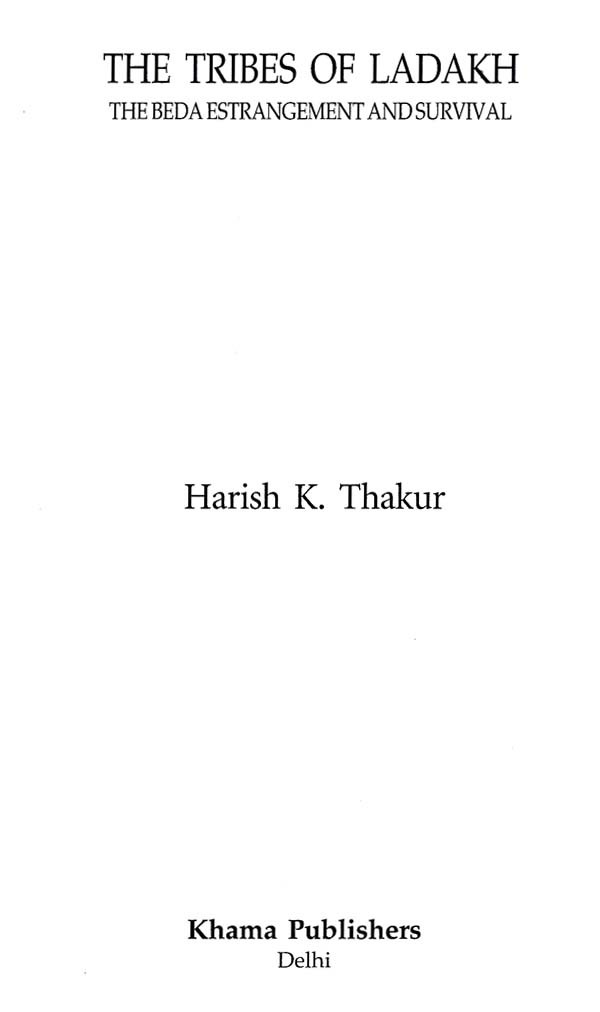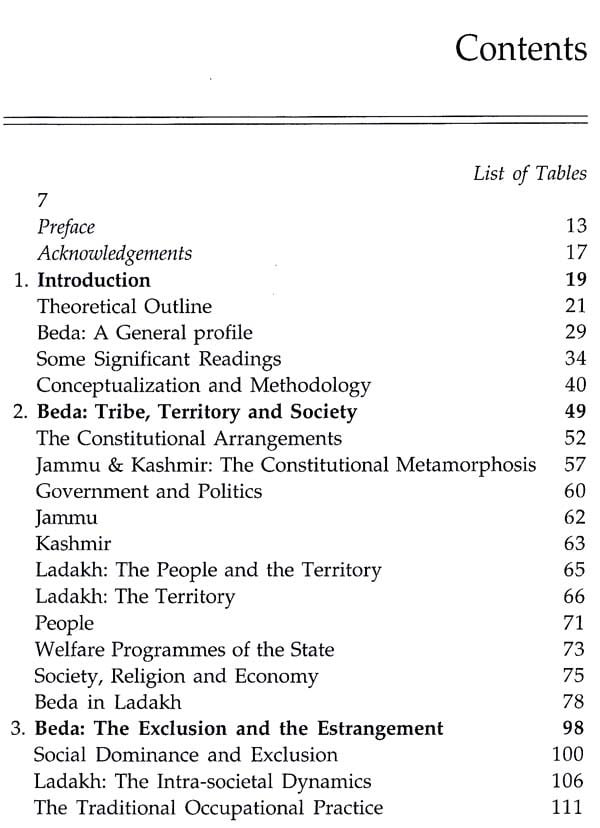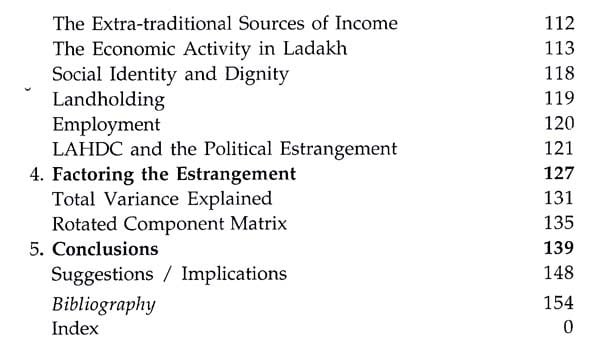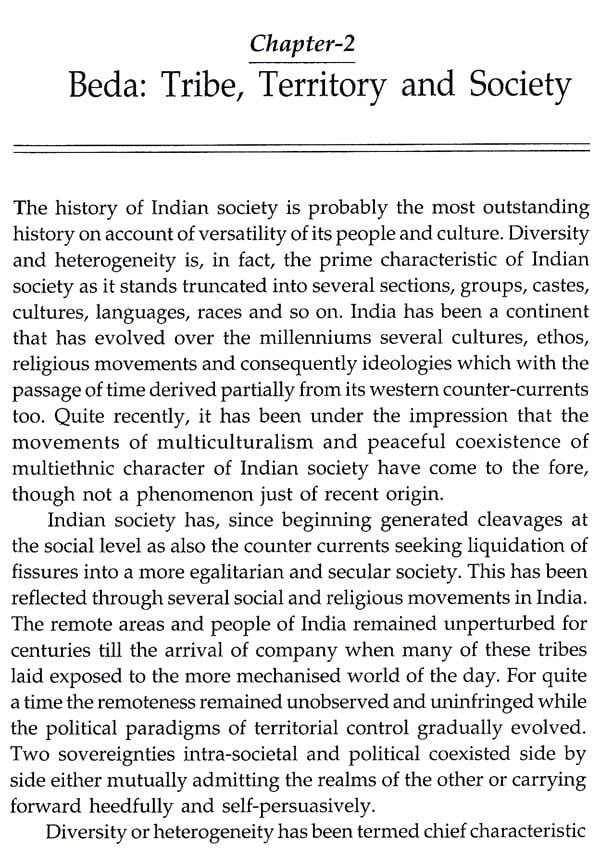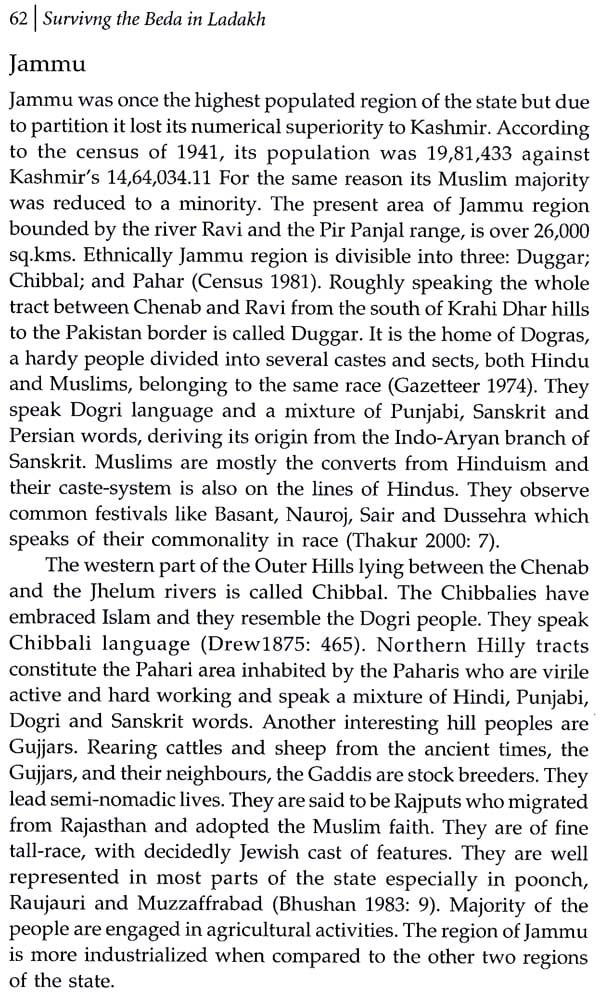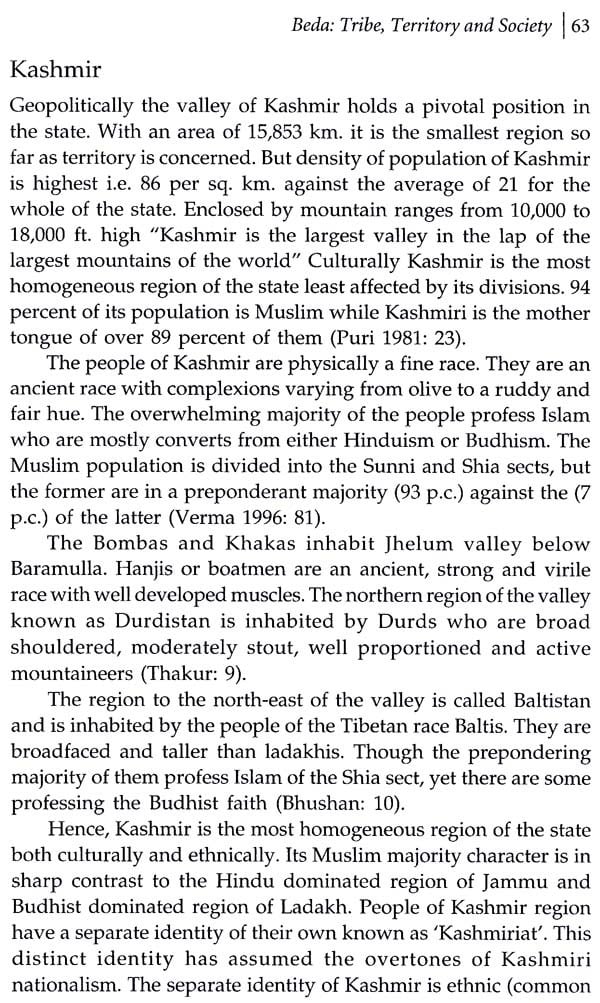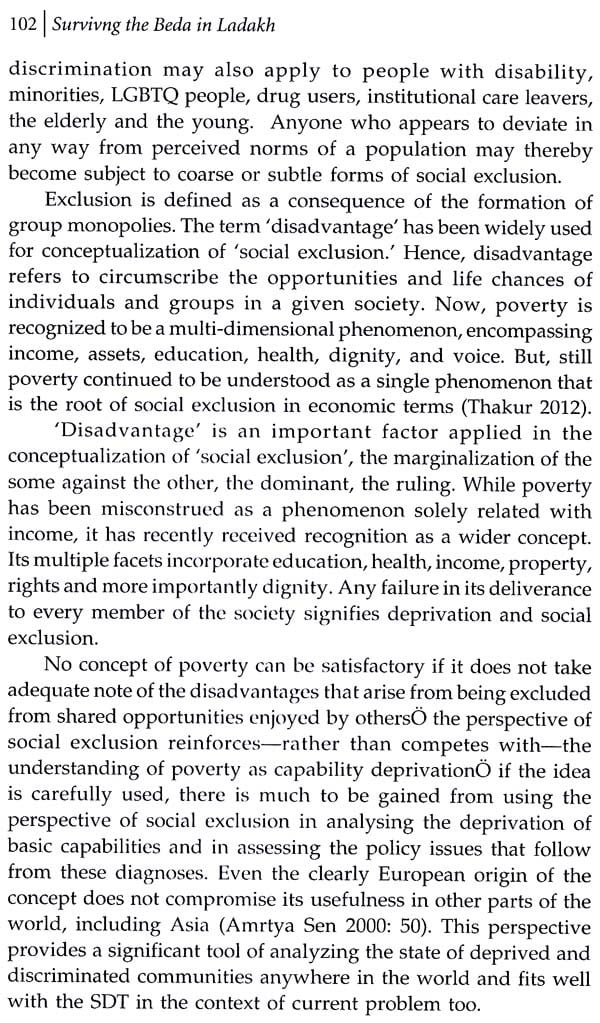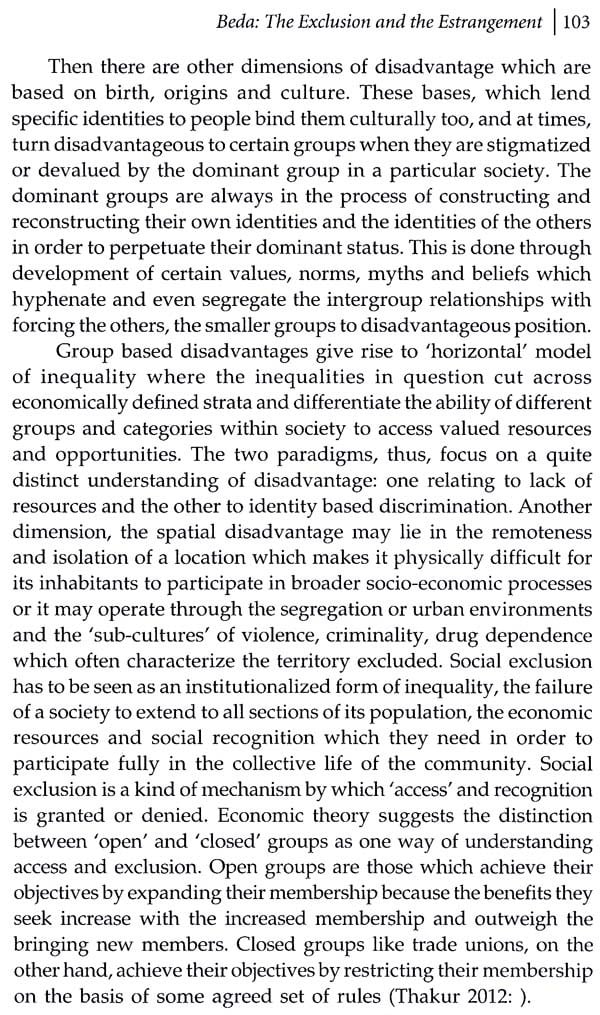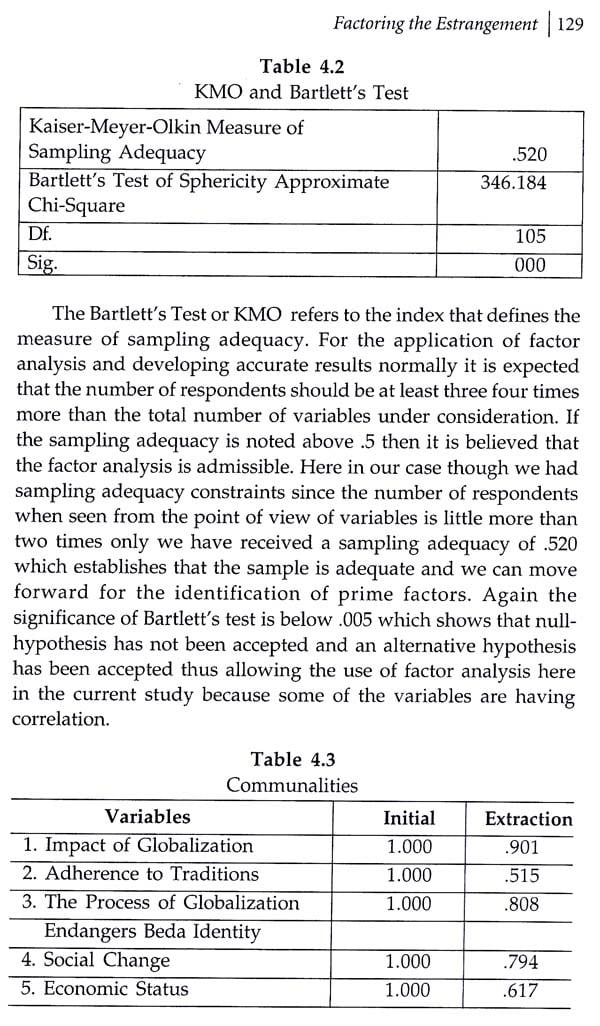
The Tribes of Ladakh- The Beda Estrangement and Survival
Book Specification
| Item Code: | UAS366 |
| Author: | Harish K. Thakur |
| Publisher: | KHAMA PUBLISHERS, Delhi |
| Language: | English |
| Edition: | 2020 |
| ISBN: | 9788195331208 |
| Pages: | 162 |
| Cover: | HARDCOVER |
| Other Details | 8.50 X 6.00 inch |
| Weight | 340 gm |
Book Description
Known for musical performances the Beda of Ladakh have witnessed a drastic dilution over the decades. In 2011 they numbered 420 only. Today the Beda are mostly concentrated in the areas of Leh, Spituk, Chushut, Nubra, Lato and many more villages of Ladakh district. Their number in Kargil district is quite small. They normally play on Surna, Daff and Daman to entertain people and are part of different social and cultural ceremonies. However, the lack of earnings from the traditional occupational practice and the prevalent social apathy and continuous neglect by the dominant Bhot and other tribes of Ladakh, Beda have been opting for better income alternatives. The current volume unravels how the Beda are deviating from their traditional occupation and customs because of discrimination, lack of dignified status and low income.
The existence of different tribal groups in a particular society leads to the processes of assimilation, integration or social exclusion of the weaker groups by the dominant ones. Social exclusion or marginalization of a group is the social disadvantage and relegation to the fringe of society. In this process individuals are blocked from or denied full access to various rights, opportunities and resources that are normally available to the members of a different group, and which are fundamental to social integration and observance of human rights within that particular system. The Beda have suffered social exclusion and relegation that has caused serious estrangement among them leading even to the adoption of Islam and relinquishing of their traditional identity.
Prof. Harish K. Thakur is currently Chairman in the Department of Political Science and Director at the Centre for Canadian Studies, H.P. University, Shimla. He has so far authored thirteen books (poetry and politics) and more than hundred research papers, book reviews and essays. Currently he is also President of Shimla Literary Society and editor of two prestigious journals Himachal Pradesh University Journal and Conifers Call: Shimla Journal of Poetry & Criticism. Prof. Thakur specializes in tribal studies and Indian foreign policy. His earlier volumes Alienation and Integration in Jammu and Kashmir (2000) and Ladakh: The Individuality vs. State (2014) have been well taken.
Today Ladakh has emerged out to be an area of keen interest for the historians, sociologists, social anthropologists, economists, health and environment activists and political commentators on account of different reasons. Ladakh has startled the world over its mammoth vast expanse of barren landscapes, lofty mountain ranges, myriad coloured topography, frightening climate and above all strategic location. It conjoins the ever sensitive borders between India and China, India and Pakistan and the territories of Tajikistan too are not far from the borderline of Ladakh. Before its capture by China in 1950 it remained part of Tibet and its cultural flourishing derived a lot for centuries from the capital of Lhasa.
If viewed from the human development index point the people of the region are significantly underdeveloped and deprived. Contrary to the benefits expected from the special status of the state under article 370, the article proved to be a hurdle in the extension of the Scheduled Tribe status to the people here inhabiting remote areas and leading a poor, nomadic or isolated life. This was done quite late by the government of India in 1989. The tribes have over the centuries undergone stages of unplanned development and exploitation of natural resources which has caused them several problems.
Tribes are the last vestiges that survive centuries old cultures, traditions, customs and values. The tribal population of India is significantly large when seen from the perspective of huge population of India. The history of Indian society is one of the most outstanding histories on account of versatility of its people and culture. India is home to a large number of cultures, ethos, religious movements and consequently ideologies which with the passage of time derived partially from its western counter-currents too. Tribals who are also known as adivasis, janjati etc. are mostly remotely located people who have been habilitating the fringes of societies for centuries mostly unnoticed, underdeveloped and exploited.
Indian culture owes significantly to the tribal life, culture, values and traditions. While tribal life had its impact on the social system of India the Indian society in turn influenced the tribal life constantly as the tribal people gradually came in contact with the Indian culture and ethos. The institution of caste is one such influence that one can notice in certain tribes of India. Sanskritization, urbanization and modernization drives have a direct bearing on tribal life in India and have caused a significant transformation of the tribal people. The differentiations of work and roles introduced by these processes have cut across the customary roles and functions of the tribes which causes fissures in the socio-cultural compactness of the different tribes in different ways.
**Contents and Sample Pages**
